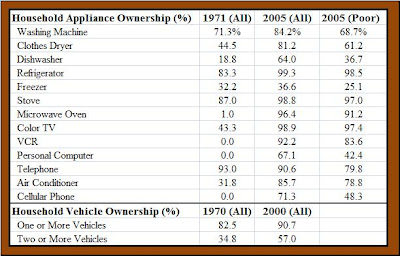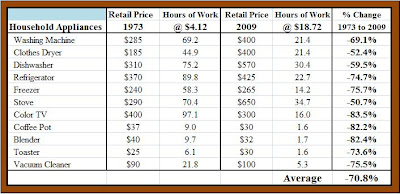In years past and in the present, the basic staples and necessities are things to compare.
No you have to compare everything. If your nominal income doubles, and the nominal price of necessities also doubles, while the nominal price of luxuries stays the same, you would be wealthier, but adjusting just for necessities would say that your real income is unchanged.
Except for housing (which is an investment good as much as a consumption good and which is subject to bubbles, and to government intervention to raise prices) necessities make a smaller and part of what we spend. And housing isn't the same as housing in the past either, even if you adjust for the larger average size of today's houses, you still don't cover the differences. Houses today have to meet codes for things like fire resistance that they didn't have to 100 years ago. You also have modern appliances that often come as part of the houses cost, you have efficient heating (as opposed to say a fireplace), central air (as opposed to opening a window).
One thing that makes inflation stats higher than they otherwise would be is that common purchase items that are cheap now, used to be luxuries and didn't get counted in the CPI until after they had most of their price drop. The expensive new item comes out, very few buy it, and it doesn't get counted, then it drops a lot (say VCRs going from $1000 to $200) and now it gets added, but its already had most of its price drop that never figured in to the CPI.
----------
Looking through these pages will give you a sense what it was like in 1895, when the average worker had to put in 16 hours to earn enough money to buy a hair brush or 260 hours for a one-speed bicycle.
Yes. That's one of the best measures of how much richer we are now. We can buy many things for a lot less labor.
Here is some more on that theme

mjperry.blogspot.com


mjperry.blogspot.com

mjperry.blogspot.com |








